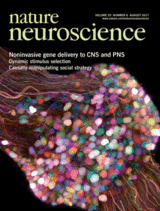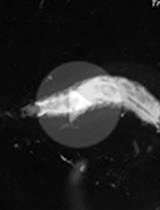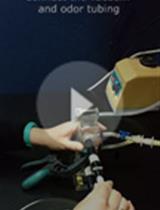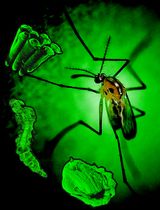- EN - English
- CN - 中文
Assaying Thermo-nociceptive Behavior in Drosophila Larvae
果蝇幼虫热伤害感受行为分析
发布: 2018年02月20日第8卷第4期 DOI: 10.21769/BioProtoc.2737 浏览次数: 8289
评审: Jay Z ParrishAdler R. DillmanAnonymous reviewer(s)
Abstract
Thermo-nociception, the detection and behavioral response to noxious temperatures, is a highly conserved action to avoid injury and ensure survival. Basic molecular mechanisms of thermal responses have been elucidated in several model organisms and are of clinical relevance as thermal hypersensitivity (thermos-allodynia) is common in neuropathic pain syndromes. Drosophila larvae show stereotyped escape behavior upon noxious heat stimulation, which can be easily quantified and coupled with molecular genetic approaches. It has been successfully used to elucidate key molecular components and circuits involved in thermo-nociceptive responses. We provide a detailed and updated protocol of this previously described method (Tracey et al., 2003) to apply a defined local heat stimulus to larvae using a fast-regulating hot probe.
Keywords: Drosophila (果蝇)Background
Drosophila larvae respond to thermal stimuli above 40 °C with an escape response (Tracey et al., 2003), likely to prevent cell damage and injury. The activation of nociceptive sensory neurons, class IV dendritic arborization (C4da) neurons, is necessary and sufficient for this response (Hwang et al., 2007). Applying a local thermo-nociceptive stimulus using a heated probe (> 40 °C, Figures 1, 5, 6) typically triggers a stereotyped behavior consisting of a 360° rolling motion along the larval body axis and increased speed of locomotion. Previous studies have shown that the transient receptor potential (Trp) channel painless (Tracey et al., 2003) and TrpA1 (Neely et al., 2011; Zhong et al., 2012) are the sensory channels responding to noxious heat in this system, as their expression and function in C4da neurons is required for nociceptive escape response.
Although mechano- and thermos-nociceptive stimulation of larvae result in very similar rolling escape responses (Hwang et al., 2007; Tracey et al., 2003; Zhong et al., 2012), the involved neuronal networks seem to differ. Despite the need to touch the animal with the heated probe, gentle touch-sensitive neurons (C2da and C3da) do not play a role in the behavioral response to noxious temperatures, but are essential for mechano-nociceptive responses (Hu et al., 2017). Activation of C4da neurons with noxious heat elicits in neuronal burst firing (Terada et al., 2016), which might be sufficient to elicit strong downstream network responses to induce escape behavior. Moreover, thermo-sensitive TrpA1 expressing neurons in the CNS respond to temperature gradients and are sufficient to induce rolling behavior (Luo et al., 2017). Thus thermo- and mechano-nociception might employ distinct subsets of the nociceptive network.
Using thermo-nociceptive assays together with genetic approaches in this system has led to the identification of several molecular components (Neely et al., 2010; Honjo et al., 2016), including pathways regulating thermal sensitivity (Babcock et al., 2011; Im et al., 2015). This makes the larval nociceptive system an attractive model to identify key components and circuit mechanisms regulating thermo-nociception.
Here, we provide a detailed protocol to conduct hot probe thermo-nociception assays as used in our recent work (Hu et al., 2017), which is based on the previously developed and described method by Tracey et al. (2003). We built a custom hot probe (Figure 1) with fast control of temperature required for consistent behavioral responses. Similar setups and protocols have also been employed in various other studies with comparable results (Neely et al., 2011; Chattopadhyay et al., 2012; Zhong et al., 2012). Our protocol and setup allow assaying behavioral responses to a locally applied hot stimulus depending on C4da and downstream neuron function (Figure 6).
Materials and Reagents
- Petri dishes 10 cm Ø (SARSTEDT, catalog number: 82.1473 )
- Fly stocks
Chromosome, Bloomington stock center No.:
w1118 (X, BL 6326)
w*; ppk-Gal4 (X, 3rd, BL 32079)
w*;UAS-TNTE (X, 3rd, BL 28997) - Agar Kobe I (Carl Roth, catalog number: 5210.4 )
- Agar plates (see Recipes)
- Fly food (see Recipes)
- Agar (strings) (Gewürzmühle Brecht, Eggenstein, Germany, catalog number: 00262 )
- Corn flour (Davert, Newstartcenter, catalog number: 17080 )
- Soy flour (Davert, Newstartcenter, catalog number: 46985 )
- Brewer’s yeast (ground) (Gewürzmühle Brecht, Eggenstein, Germany, catalog number: 03462 )
- Malt syrup (MeisterMarken – Ulmer Spatz, Bingen am Rhein, Germany, catalog number: 728985 )
- Treacle (molasses) (Grafschafter Krautfabrik, Meckenheim, catalog number: 01939 )
- Nipagin (Methyl 4-hydroxybenzoate) (Sigma-Aldrich, catalog number: 54752-1KG-F )
- Propionic acid (Carl Roth , catalog number: 6026.3 )
- Agar (strings) (Gewürzmühle Brecht, Eggenstein, Germany, catalog number: 00262 )
Equipment
- Brush (Size 1, Boesner, model: Da Vinci Nova Serie 1570 , catalog number: D15701)
- Forceps Dumont #3 (Fine Science Tools, catalog number: 11231-30 )
- Camera Basler ace acA2040-25gc (Basler, catalog number: 105716 )
- Stereoscope ZEISS Stemi-2000C (Pulch und Lorenz, catalog number: 455053-0000-000)
Manufacturer: ZEISS, model: Stemi-2000C . - External light souce LED Schott KL 1500 LCD (Pulch und Lorenz, catalog number: 150.200)
Manufacturer: SCHOTT, model: KL 1500 LCD . - Hot probe, custom made (see below, Figure 1):
- Thermometer Greisinger electronic GTH1170 (Conrad, catalog number: 100599-62 )
- Electrolube polyurethane (Electrolube, catalog number: UR5634RP250G )
- Electronic parts (see supplementary material)
In principle, a commercially available and precise temperature-controlled soldering iron as used in several other studies (Neely et al., 2011; Tracey et al., 2003; Zhong et al., 2012) should provide sufficient accuracy to perform this assay. Here, we designed a temperature control device to keep the temperature very precisely at a constant value of 46 °C (Figure 1). One problem is the high temperature loss when the probe dips into the water film on the agar plate, which results in lower and variable temperatures on the larva. To prevent this caveat, the device has to regulate the temperature very fast to keep the previously set values. One such design has been previously developed and employed (Babcock et al., 2009) by using a custom-built temperature controller.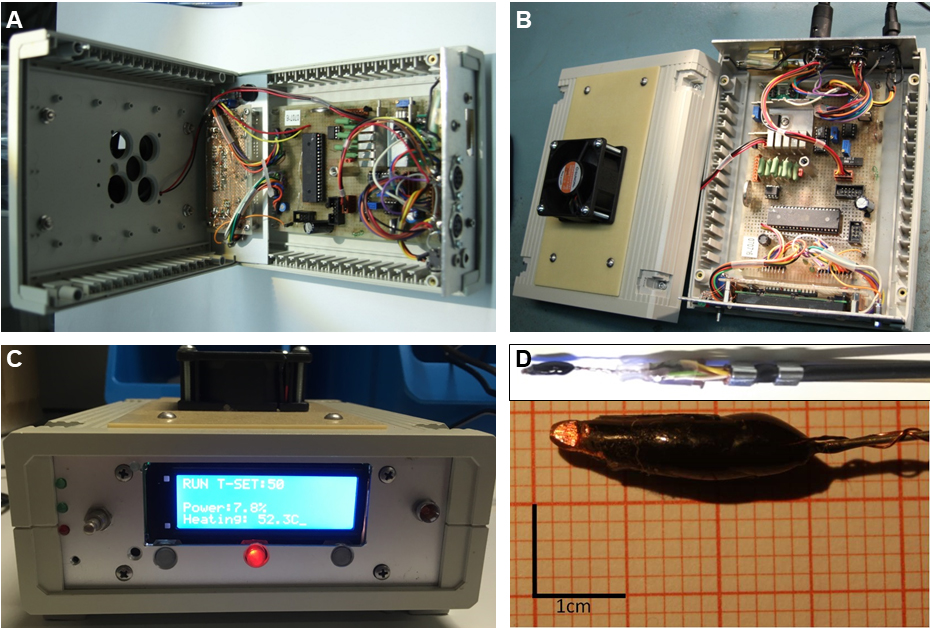
Figure 1. Hot probe setup and design. A-C. Custom built controller for setting the temperature with connected probe. D. The temperature-controlled hot probe consists of a diode (Z-diode or regular diode) with one wire shortened and shaped as a probe tip (facing left). The second wire is connected to the electronic controller and the diode is sealed and insulated with a polyurethane resin to prevent excessive temperature leakage. An external temperature sensor (thermocouple, e.g., Greisinger electronic GTH1170) can be optionally included by soldering the sensor to the probe for external temperature monitoring.
For our hot probe design, our in-house workshop employed a universal diode (1N4001) or alternatively, a Z-diode as a heating element. The diode is heated by a constant and precisely controlled direct current. The forward voltage is independent of the current (which is kept constant), but only depends on the temperature of the barrier layer of the diode. This allows using the occurring voltage for precise measurement and regulation of the barrier layer temperature.
One of the two conducting diode wires functions as the hot probe and should be shaped as follows: The protruding wire is shortened to 4-5 mm and 1.6 by 0.9 mm width, similarly to the previously described size and shape (Tracey et al., 2003). The tip of the hot probe should be spatula shaped and should not have any sharp edges. When the temperature of the tip is below 40 °C, touching the larva should not cause rolling behavior. It should also be as short as possible (4-5 mm) to prevent unnecessary heat loss and large temperature differences between the tip and the diode barrier layer, where the temperature is measured.
Voltage measurement and temperature regulation are achieved using an appropriate electronic system (built in-house and custom programmed) connected to the second diode wire. It displays the current temperature and adjusts the power at the diode tip to maintain the desired constant temperature. The precise circuit and block diagram, electronic parts and custom programming are provided as supplementary material.
Calibration of hot probe diode:
The insulated diode is placed in a 37 °C water reservoir (~1 L bottle with a magnetic stirrer, the temperature measured with a high precision reference thermometer). A very short impulse (2-10 msec only to prevent significant heating of the diode) is used to measure the voltage of the diode barrier layer at 37 °C. The same forward voltage measurement is performed at 55 °C. The forward voltage change between the two calibration points linearly correlates with the temperature and thus allows using the diode voltage for temperature measurement and control within this temperature range. - Thermometer Greisinger electronic GTH1170 (Conrad, catalog number: 100599-62 )
Software
- Video software
- Stream Pix6 (Norpix Inc., Montreal, Quebec, ordered from Rauscher GmbH, Germany, art. no. Streampix STP-6-S-STD)
- Windows VLC Media Player (www.videolan.org)
- Stream Pix6 (Norpix Inc., Montreal, Quebec, ordered from Rauscher GmbH, Germany, art. no. Streampix STP-6-S-STD)
Procedure
文章信息
版权信息
© 2018 The Authors; exclusive licensee Bio-protocol LLC.
如何引用
Petersen, M., Tenedini, F. M., Hoyer, N., Kutschera, F. and Soba, P. (2018). Assaying Thermo-nociceptive Behavior in Drosophila Larvae. Bio-protocol 8(4): e2737. DOI: 10.21769/BioProtoc.2737.
分类
神经科学 > 行为神经科学 > 感觉运动反应
神经科学 > 感觉和运动系统 > 动物模型
分子生物学 > DNA > 诱/突变
您对这篇实验方法有问题吗?
在此处发布您的问题,我们将邀请本文作者来回答。同时,我们会将您的问题发布到Bio-protocol Exchange,以便寻求社区成员的帮助。
提问指南
+ 问题描述
写下详细的问题描述,包括所有有助于他人回答您问题的信息(例如实验过程、条件和相关图像等)。
Share
Bluesky
X
Copy link




